Comparative Analysis between the Government Micro-Grid Plan and Computer Simulation Results Based on Real Data: The Practical Case for a South Korean Island
Abstract
:1. Introduction
- (1)
- Can the implementation of a hybrid system be an adequate and reliable option for electrification in Gasado Island?
- (2)
- Is the hybrid energy supply built by KEPCO offering the most economically and environmentally practical solution?
2. Case Study Description
2.1. Population and Location
2.2. Energy Status and Policy
3. Methods and System Configuration
3.1. Load Information
3.2. Solar Energy Information
3.3. Wind Energy Information
3.4. Diesel Fuel Price
3.5. Economic Variables
3.6. Photovoltaic Panels
3.7. Wind Turbines
3.8. Converters
3.9. Generators
3.10. Batteries
3.11. Government Plan in Gasado
4. Discussion
4.1. Korean Government Plan
4.2. Optimal Solution from HOMER Simulation
4.3. Interpretation and Implication
5. Conclusions
Author Contributions
Conflicts of Interest
Abbreviations
| HOMER | Hybrid Optimization Model for Electric Renewables; |
| NREL | National Renewable Energy Laboratory; |
| KEPCO | Korea Electric Power Corporation; |
| PV | Photovoltaic; |
| NPC | Net Present Cost; |
| COE | Cost of Energy; |
| GHG | Green House Gas; |
| DG | Diesel Generator; |
| WT | Wind Turbine; |
| FC | Fuel Cell; |
| GMT | Greenwich Mean Time; |
| XLS | BWC Excel-S; |
| Label | Diesel Generator; |
| EMS | Energy Management System; |
| KMA | Korea Meteorological Administration. |
References
- Wittneben, B.B. The impact of the Fukushima nuclear accident on European energy policy. Environ. Sci. Policy 2012, 15, 1–3. [Google Scholar] [CrossRef]
- Bradford, P. Energy policy: The nuclear landscape. Nature 2012, 483, 151–152. [Google Scholar] [CrossRef]
- Thomas, S. What will the Fukushima disaster change? Energy Policy 2012, 45, 12–17. [Google Scholar] [CrossRef]
- Park, E.; Ohm, J.Y. Factors influencing the public intention to use renewable energy technologies in South Korea: Effects of the Fukushima nuclear accident. Energy Policy 2014, 65, 198–211. [Google Scholar] [CrossRef]
- Cohen, G.; Joutz, F.; Loungani, P. Measuring energy security: Trends in the diversification of oil and natural gas supplies. Energy Policy 2011, 39, 4860–4869. [Google Scholar] [CrossRef]
- Apergis, N.; Payne, J.E. Renewable energy consumption and economic growth: Evidence from a panel of OECD countries. Energy Policy 2010, 38, 656–660. [Google Scholar] [CrossRef]
- Klessmann, C.; Held, A.; Rathmann, M.; Ragwitz, M. Status and perspectives of renewable energy policy and deployment in the European Union—What is needed to reach the 2020 targets? Energy Policy 2011, 39, 7637–7657. [Google Scholar] [CrossRef]
- Sinha, S.; Chandel, S.S. Review of software tools for hybrid renewable energy systems. Renew. Sustain. Energy Rev. 2014, 32, 192–205. [Google Scholar] [CrossRef]
- Nema, P.; Nema, R.K.; Rangnekar, S. A current and future state of art development of hybrid energy system using wind and PV-solar: A review. Renew. Sustain. Energy Rev. 2009, 13, 2096–2103. [Google Scholar] [CrossRef]
- Mebratu, D. Sustainability and sustainable development: Historical and conceptual review. Environ. Impact Asses. Rev. 1998, 18, 493–520. [Google Scholar] [CrossRef]
- Kim, H.; Baek, S.; Park, E.; Chang, H.J. Optimal green energy management in Jeju, South Korea—On-grid and off-grid electrification. Renew. Energy 2014, 69, 123–133. [Google Scholar] [CrossRef]
- Baek, S.; Kim, H.; Chang, H.J. Optimal Hybrid Renewable Power System for an Emerging Island of South Korea: The Case of Yeongjong Island. Sustainability 2015, 7, 13985–14001. [Google Scholar] [CrossRef]
- Rabe, B.G. Race to the Top: The Expanding Role of U.S. State Renewable Portfolio Standards; Pew Center on Global Climate Change: Arlington, VA, USA, 2006. [Google Scholar]
- Carley, S. The era of state energy policy innovation: a review of policy instruments. Rev. Policy Res. 2011, 28, 265–294. [Google Scholar] [CrossRef]
- Hong, T.; Koo, C.; Lee, S. Bench marks as a Tool for Free Allocation through Comparison with Similar Projects: Focused on Multi-Family Housing Complex. Appl. Energy 2014, 114, 663–675. [Google Scholar] [CrossRef]
- Kim, J.; Hong, T.; Koo, C. Economic and environmental evaluation model for selecting the optimum design of green roof systems in elementary schools. Environ. Sci. Technol. 2012, 46, 8475–8483. [Google Scholar] [CrossRef] [PubMed]
- Koo, C.; Hong, T.; Lee, M.; Park, H. Development of a New Energy Efficiency Rating System for the Existing Residential Buildings. Energy Policy 2014, 68, 218–231. [Google Scholar] [CrossRef]
- Chae, W.K.; Lee, H.J.; Won, J.N.; Park, J.S.; Kim, J.E. Design and Field Tests of an Inverted Based Remote MicroGrid on a Korean Island. Energies 2015, 8, 8193–8210. [Google Scholar] [CrossRef]
- Ajao, K.R.; Adegun, I.K. Development and power performance test of a small three-blade horizontal-axis wind turbine. Heat Transf. Res. 2009, 40, 777–792. [Google Scholar] [CrossRef]
- Markvart, T. Sizing of hybrid photovoltaic-wind energy systems. Sol. Energy 1996, 57, 277–281. [Google Scholar] [CrossRef]
- McGowan, J.G.; Manwell, J.F.; Avelar, C.; Warner, C.L. Hybrid wind/PV/diesel hybrid power systems modeling and South American applications. Renew. Energy 1996, 9, 836–847. [Google Scholar] [CrossRef]
- Borowy, B.S.; Salameh, Z.M. Optimum photovoltaic array size for a hybrid wind/PV system. IEEE Trans. Energy Conver. 1994, 9, 482–488. [Google Scholar] [CrossRef]
- Sopian, K.; Zaharim, A.; Ali, Y.; Nopiah, Z.M.; Razak, J.A.; Muhammad, N.S. Optimal operational strategy for hybrid renewable energy system using genetic algorithms. WSEAS Trans. Math. 2008, 7, 130–140. [Google Scholar]
- Al-Karaghouli, A.; Kazmerski, L.L. Optimization and life-cycle cost of health clinic PV system for a rural area in southern Iraq using HOMER software. Sol. Energy 2010, 84, 710–714. [Google Scholar] [CrossRef]
- Chang, H.J.; Kim, I.S.; Kim, D.W.; Yang, T. Business potential of sustainable energy in Korea: Hybrid method of various feasibility studies from path dependence and path evolution perspective. Renew. Energy 2013, 50, 464–475. [Google Scholar] [CrossRef]
- Sovacool, B.K.; Brown, M.A. Twelve metropolitan carbon footprints: A preliminary comparative global assessment. Energy Policy 2009, 38, 4856–4869. [Google Scholar] [CrossRef]
- Demiroren, A.; Yilmaz, U. Analysis of change in electric energy cost with using renewable energy sources in Gökceada, Turkey: An island example. Renew. Sustain. Energy Rev. 2010, 14, 323–333. [Google Scholar] [CrossRef]
- Dursun, B. Determination of the optimum hybrid renewable power generating systems for Kavakli campus of Kirklareli University, Turkey. Renew. Sustain. Energy Rev. 2012, 16, 6183–6190. [Google Scholar] [CrossRef]
- Baek, S.; Park, E.; Kim, M.G.; Kwon, S.J.; Kim, K.J.; Ohm, J.Y.; del Pobil, A.P. Optimal renewable power generation systems for Busan metropolitan city in South Korea. Renew. Energy 2016, 88, 517–525. [Google Scholar] [CrossRef]
- Karakoulidis, K.; Mavridis, K.; Bandekas, D.V.; Adoniadis, P.; Potolias, C.; Vordos, N. Techno-economic analysis of a stand-alone hybrid photovoltaic-diesel–battery-fuel cell power system. Renew. Energy 2011, 36, 2238–2244. [Google Scholar] [CrossRef]
- Asrari, A.; Ghasemi, A.; Javidi, M.H. Economic evaluation of hybrid renewable energy systems for rural electrification in Iran—A case study. Renew. Sustain. Energy Rev. 2012, 16, 3123–3130. [Google Scholar] [CrossRef]
- Van Alphen, K.; van Sark, W.G.; Hekkert, M.P. Renewable energy technologies in the Maldives—determining the potential. Renew. Sustain. Energy Rev. 2007, 11, 1650–1674. [Google Scholar] [CrossRef]
- Shaahid, S.M.; Elhadidy, M.A. Economic analysis of hybrid photovoltaic-diesel-battery power systems for residential loads in hot regions—A step to clean future. Renew. Sustain. Energy Rev. 2008, 12, 488–503. [Google Scholar] [CrossRef]
- Ngan, M.S.; Tan, C.W. Assessment of economic viability for PV/wind/diesel hybrid energy system in southern Peninsular Malaysia. Renew. Sustain. Energy Rev. 2012, 16, 634–647. [Google Scholar] [CrossRef]
- Hafez, O.; Bhattacharya, K. Optimal planning and design of a renewable energy based supply system for microgrids. Renew. Energy 2012, 45, 7–15. [Google Scholar] [CrossRef]
- Kusakana, K.; Vermaak, H.J. Hybrid renewable power systems for mobile telephony base stations in developing countries. Renew. Energy 2013, 51, 419–425. [Google Scholar] [CrossRef]
- Ashourian, M.H.; Cherati, S.M.; Mohd Zin, A.A.; Niknam, N.; Mokhtar, A.S.; Anwari, M. Optimal green energy management for island resorts in Malaysia. Renew. Energy 2013, 51, 36–45. [Google Scholar] [CrossRef]
- Dorji, T.; Urmee, T.; Jennings, P. Options for off-grid electrification in the Kingdom of Bhutan. Renew. Energy 2012, 45, 51–58. [Google Scholar] [CrossRef]
- Chen, J.; Rabiti, C. Synthetic wind speed scenarios generation for probabilistic analysis of hybrid energy systems. Energy 2016, in press. [Google Scholar] [CrossRef]
- Kim, H.; Baek, S.; Choi, K.H.; Kim, D.; Lee, S.; Kim, D.; Chang, H.J. Comparative Analysis of On-and Off-Grid Electrification: The Case of Two South Korean Islands. Sustainability 2016, 8. [Google Scholar] [CrossRef]
- Baek, S.; Kim, H.; Chang, H.J. Optimal Hybrid Renewable Airport Power System: Empirical Study on Incheon International Airport, South Korea. Sustainability 2016, 8. [Google Scholar] [CrossRef]
- Chen, J.; Garcia, H.E. Economic optimization of operations for hybrid energy systems under variable markets. Appl. Energy 2016, 177, 11–24. [Google Scholar] [CrossRef]
- Yoo, K.; Park, E.; Kim, H.; Ohm, J.Y.; Yang, T.; Kim, K.J.; Chang, H.J.; del Pobil, A.P. Optimized Renewable and Sustainable Electricity Generation Systems for Ulleungdo Island in South Korea. Sustainability 2014, 6, 7883–7893. [Google Scholar] [CrossRef]
- Mondal, M.A.H.; Denich, M. Assessment of renewable energy resources potential for electricity generation in Bangladesh. Renew. Sustain. Energy Rev. 2010, 14, 2401–2413. [Google Scholar] [CrossRef]
- Park, E.; Han, T.; Kim, T.; Kwon, S.J.; del Pobil, A.P. Economic and Environmental Benefits of Optimized Hybrid Renewable Energy Generation Systems at Jeju National University, South Korea. Sustainability 2016, 8. [Google Scholar] [CrossRef]
- Lambert, T.; Gilman, P.; Lilienthal, P. Micropower system modeling with HOMER. In Integration of Alternative Sources of Energy, 1st ed.; Farret, F.A., Simões, M.G., Eds.; John Wiley & Sons, Inc.: Hoboken, NJ, USA, 2005; pp. 379–418. [Google Scholar]
- HOMER Energy. Available online: http://homerenergy.com/software.html (accessed on 10 October 2016).
- Amutha, W.M.; Rajini, V. Techno-economic evaluation of various hybrid power systems for rural telecom. Renew. Sustain. Energy Rev. 2015, 43, 553–561. [Google Scholar] [CrossRef]
- Devabhaktuni, V.; Alam, M.; Depuru, S.S.S.R.; Green II, R.C.; Nims, D.; Near, C. Solar energy: Trends and enabling technologies. Renew. Sustain. Energy Rev. 2013, 19, 555–564. [Google Scholar] [CrossRef]
- Korea Meteorological Administration. Annual Climatological Report. Available online: http://www.kma.go.kr/repositary/sfc/pdf/sfc_ann_2015.pdf (accessed on 12 October 2016). (In Korean)
- Opinet by Korea National Oil Corporation. Available online: http://www.opinet.co.kr/user/main/mainView.do (accessed on 26 October 2016). (In Korean)
- Park, E.; Kwon, S.J. Solutions for optimizing renewable power generation systems at Kyung-Hee University’s Global Campus, South Korea. Renew. Sustain. Energy Rev. 2016, 58, 439–449. [Google Scholar] [CrossRef]
- Liu, G.; Rasul, M.G.; Amanullah, M.T.O.; Khan, M.M.K. Techno-economic simulation and optimization of residential grid-connected PV system for the Queensland climate. Renew. Energy 2012, 45, 146–155. [Google Scholar] [CrossRef]
- Journal of the Electric World. Available online: http://www.kea.kr/elec_journal/2015_7/12.pdf (accessed on 28 October 2016). (In Korean)
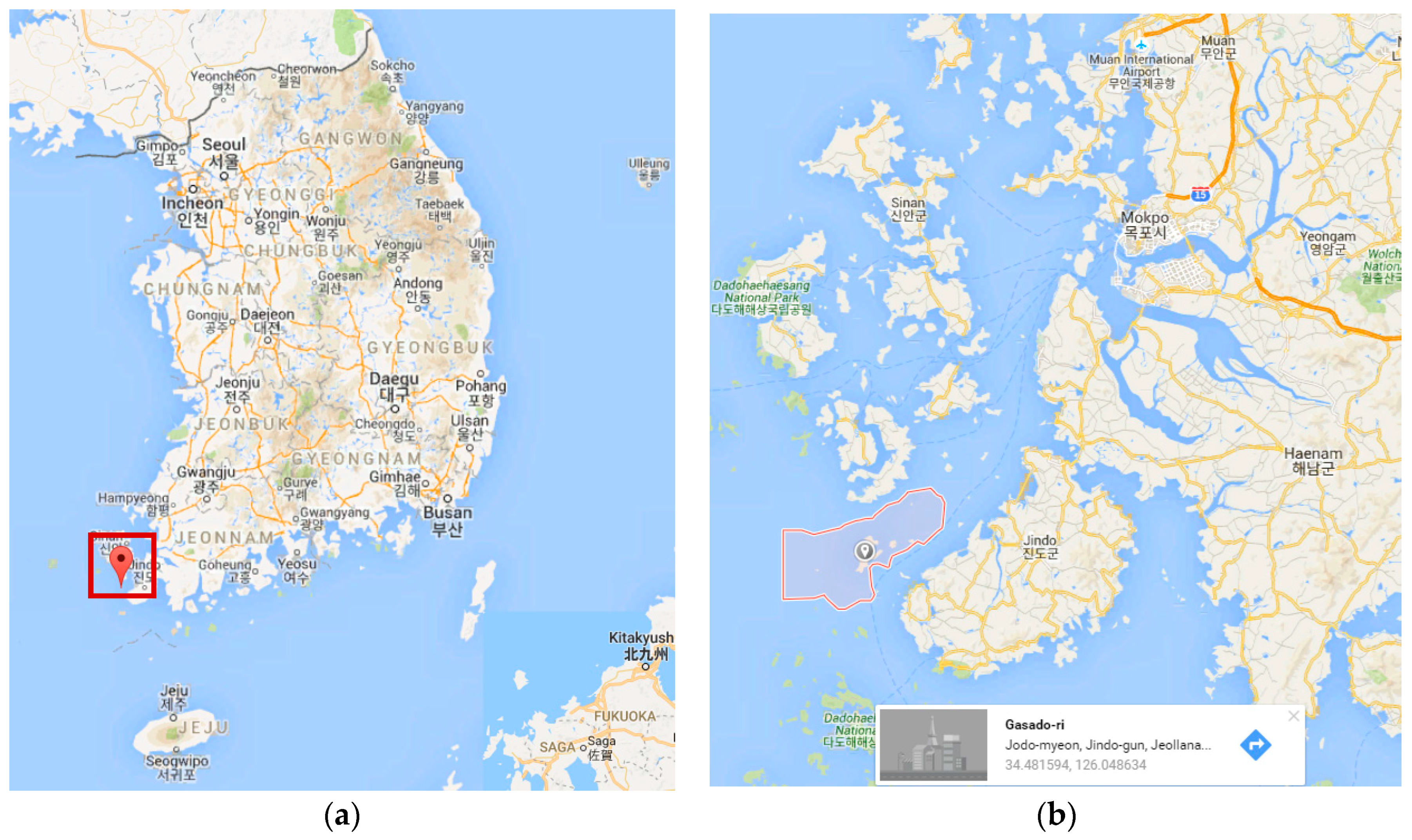


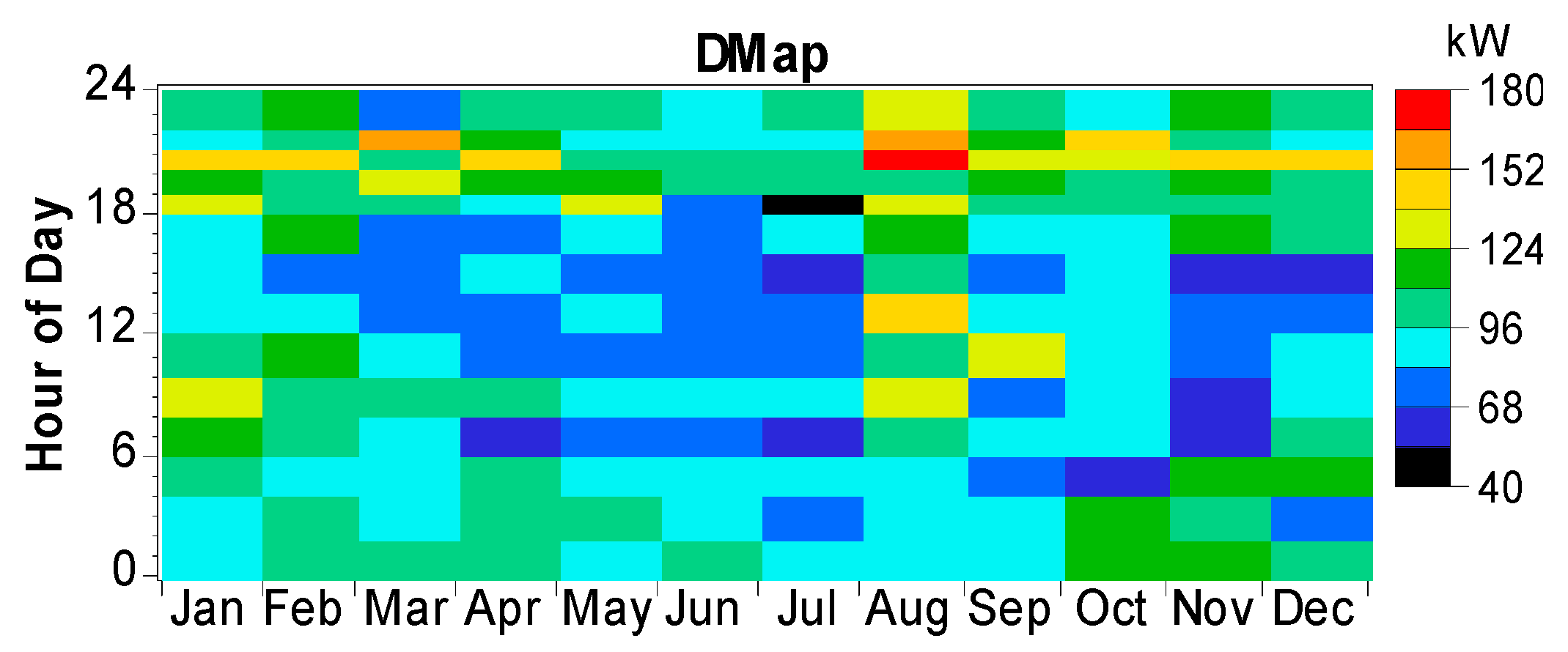
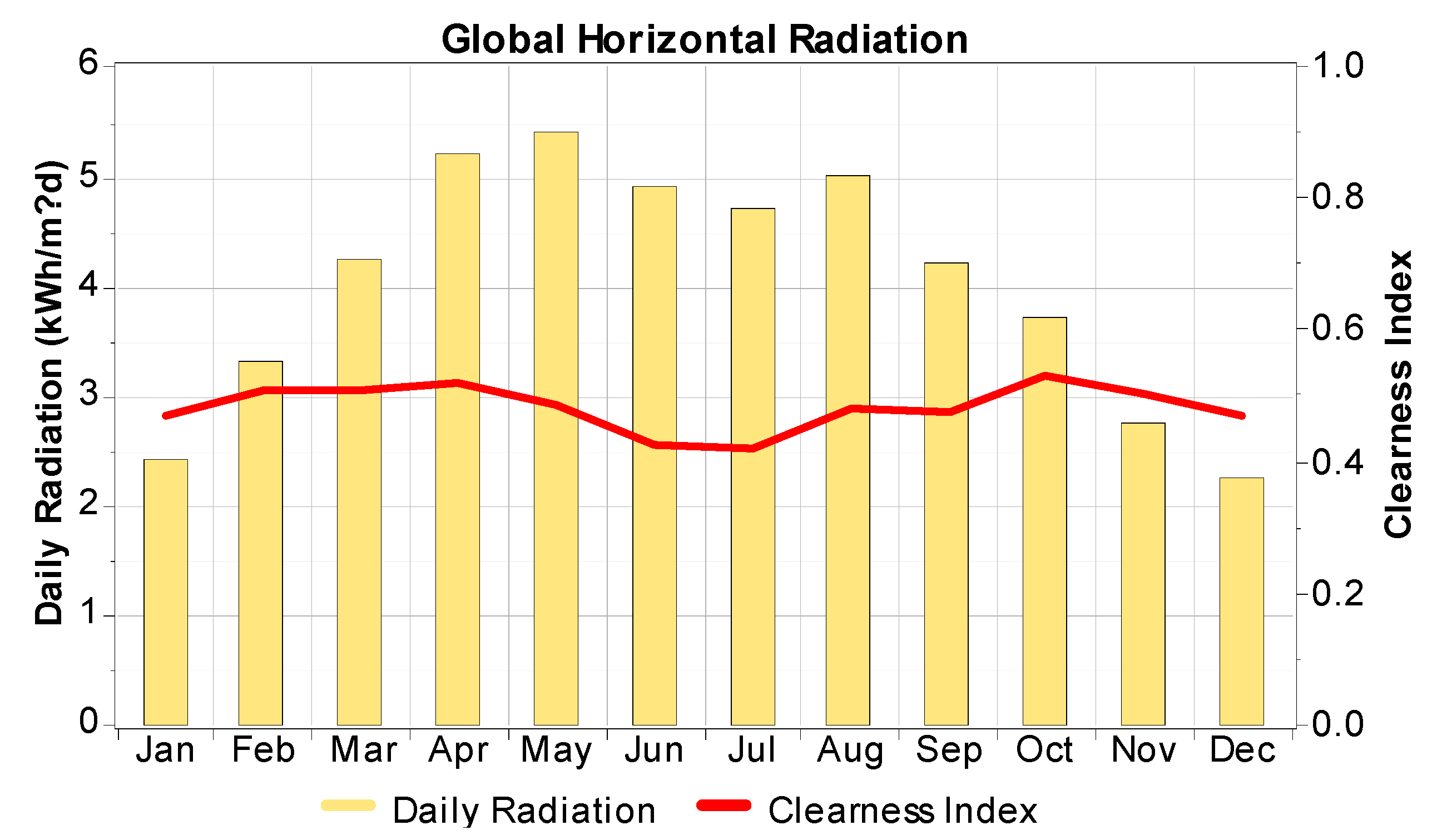

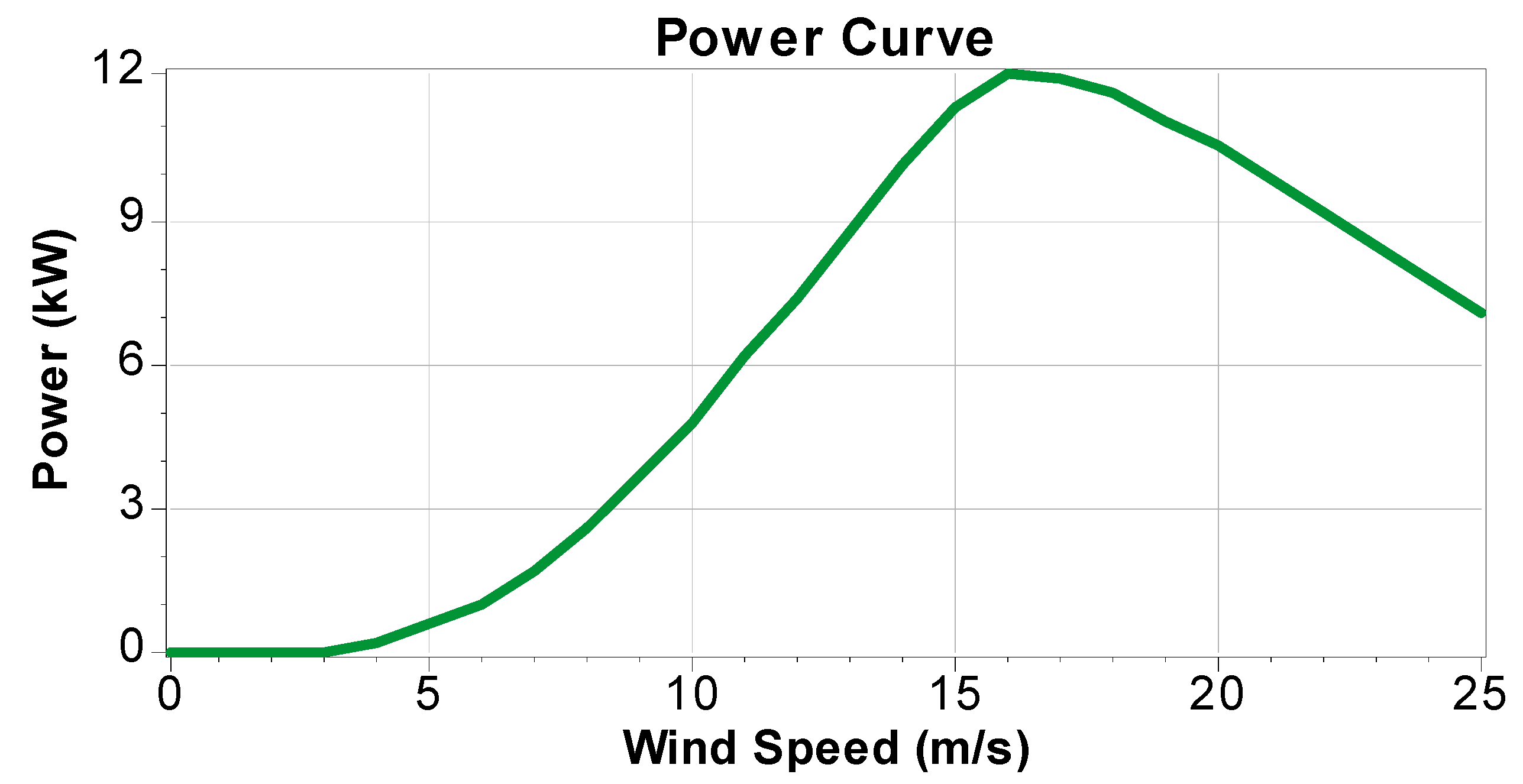




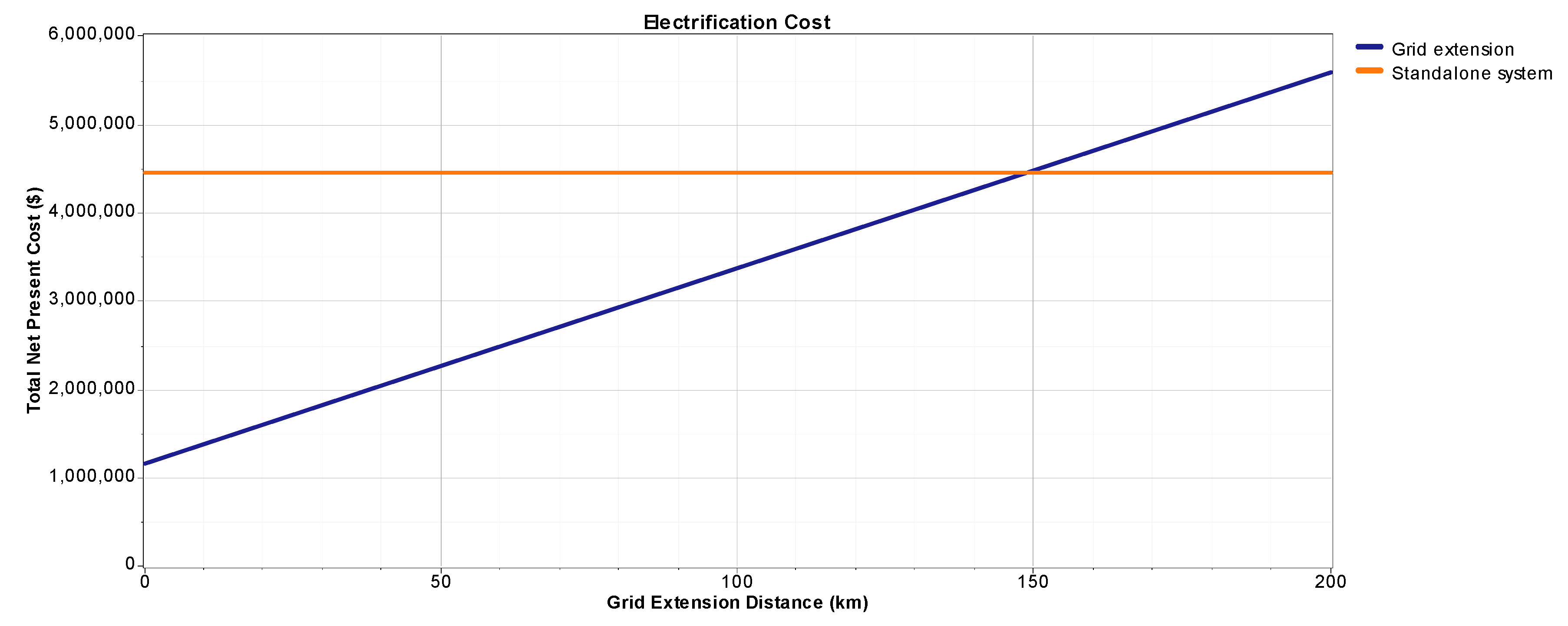

| Author | Title | System Configuration | Analytic Points |
|---|---|---|---|
| Baek et al. (2016) [29] | Optimal renewable power generation systems for Busan metropolitan city in South Korea | PV-WT-Battery-Converter | Using the hybrid renewable energy system in Metropolitan city with 100% of renewable fractions. |
| Karakoulidis et al. (2011) [30] | Techno-economic analysis of a stand-alone hybrid photovoltaic-diesel-battery-fuel cell power system | PV-Battery-Converter-DG | Complementary relationship between DG and PV, cost problems of hydrogen gas and the amount of diesel used. |
| Asrari et al. (2012) [31] | Economic evaluation of hybrid renewable energy systems for rural electrification in Iran—A case study | DG-PV-WT-Battery-Converter | Various standards, such as NPC, COE, RF, maximum distance, cost change of other fossil fuels, CO2 Emission analysis. |
| van Alphen et al. (2007) [32] | Renewable energy technologies in the Maldives—determining the potential | PV-WT-Battery-Converter | Capacity of PV: all day or 35% a day, Fixed cost of electricity was assumed, HOMER algorithm. |
| Shaahid & Elhadidy (2008) [33] | Economic analysis of hybrid photovoltaic-diesel-battery power systems for residential loads in hot regions—A step to clean future | DG-PV-Battery | Complementary relationship between DG and PV, various RF scenarios, Trade-off between COE and RF. |
| Ngan & Tan (2012) [34] | Assessment of economic viability for PV/wind/diesel hybrid energy system in southern Peninsular Malaysia | DG-PV-WT-Battery-Converter | Potential of PV, WT, and DG. Simulated 7 different system configurations. NPC, COE, excess electricity produced, reduction of CO2 emission. |
| Hafez & Bhattacharya (2012) [35] | Optimal planning and design of a renewable energy based supply system for microgrids | DG-PV-WT-Battery-Micro hydro-Grid-Converter | Optimal design, planning, sizing, GHG emissions, break-even point, and the greatest number of cases analyzed. |
| Kusakana & Vermaak (2013) [36] | Hybrid renewable power systems for mobile telephony base stations in developing countries | DG-PV-WT-Battery-Converter | Rural mobile phone stations using PV and WT, Comparative study between hybrid energy system and renewable energy system based on NPC, COE. |
| Ashourian et al. (2013) [37] | Optimal green energy management for island resorts in Malaysia | DG-PV-WT-Battery-Converter-FC-Electrolyzer-Hydrogen Tank | Sensitivity for NPC and GHG emissions, Charge and discharge of ESS, Generating principle of PV panel, Grid-parity between RE and Diesel. |
| Dorji et al. (2012) [38] | Options for off-grid electrification in the Kingdom of Bhutan | DG-Battery | Failed cases, such solar home systems and micro-hydro plants, Sensitivity analysis. |
| Jun Chen & Cristian Rabiti (2016) [39] | Synthetic wind speed scenarios generation for probabilistic analysis of hybrid energy systems | Nuclear-WT-Battery | The effects of installation of various sizes of batteries in reducing renewable variability. |
| Kim et al. (2016) [40] | Comparative Analysis of On-and Off-Grid Electrification: The Case of Two South Korean Islands | Grid-PV-WT-Battery-Converter | Comparative study between two research areas about on/off grid configuration and energy mix. |
| Baek et al. (2016) [41] | Optimal Hybrid Renewable Airport Power System: Empirical Study on Incheon International Airport, South Korea. | Grid-PV-Battery-Converter | Analysis of changes in energy mix and economic feasibility of hybrid energy system as the airport expands. |
| Jun Chen & Humberto E. Garcia (2016) [42] | Economic optimization of operations for hybrid energy systems under variable markets | Grid-Renewables-Battery-(Primary/Auxiliary)Heat Generation | Methodology for operations optimization to maximize their economic value based on predicted renewable generation and market information |
| Yoo et al. (2014) [43] | Optimized Renewable and Sustainable Electricity Generation Systems for Ulleungdo Island in South Korea | PV-WT-Converter-Battery-DG-Hydro Turbine | The reduction of diesel fuel costs after introduction of hybrid energy system. |
| Mondal & Denich (2010) [44] | Assessment of renewable energy resources potential for electricity generation in Bangladesh | Grid-PV-WT-Biomass-Hydro | Potential of hybrid renewable energy system according to renewable sources. |
| Park et al. (2016) [45] | Economic and Environmental Benefits of Optimized Hybrid Renewable Energy Generation Systems at Jeju National University, South Korea | PV-WT-Battery-Converter | Potential configurations of renewable energy system for University. |
| Type | Standard | Specification |
|---|---|---|
| Operating System | SCADA + EMS Application | Forecast, SOC management |
| Converter | 500 kVA × 2, 250 kVA × 1 | Grid Forming, PQ Operation |
| Battery | 3 MWh | Lithium ion, 1C-rate |
| Wind Turbine | 100 kW × 4, PMSG | Output limitation, LVRT |
| PV | 314 kW | Output limitation, Photovoltaic on water |
| Diesel Generator | 100 kW × 3 | Droop operation |
| Demand Management | Water supply, Air conditioner | Renewable surplus output control |
| Generator Type | Capital | Replacement | Annual O&M Cost |
|---|---|---|---|
| Wind Turbine (BWC Excel-S) | 29,000 | 25,000 | 400 |
| PV (1 kW) | 1800 | 1800 | 25 |
| Battery (Surrette 6CS25P) | 1229 | 1229 | 10 |
| Diesel (1 kW) | 450 | 450 | 0.2 |
| Converter (1 kW) | 800 | 750 | 20 |
| Pollutant | Emissions (kg/Year) |
|---|---|
| Carbon dioxide | 203,909 |
| Carbon monoxide | 503 |
| Unburned hydrocarbons | 55.8 |
| Particulate matter | 37.9 |
| Sulfur dioxide | 409 |
| Nitrogen oxide | 4491 |
| Component | Capital ($) | Replacement ($) | O&M ($) | Fuel ($) | Salvage ($) | Total ($) |
|---|---|---|---|---|---|---|
| PV | 565,200 | 0 | 107,539 | 0 | 0 | 672,739 |
| BWC Excel-S | 1,160,000 | 0 | 219,188 | 0 | −92,872 | 1,286,317 |
| Diesel Generator | 135,000 | 86,811 | 1,071,009 | 1,909,420 | −16,466 | 3,185,774 |
| Surrette 6CS25P | 553,050 | 349,041 | 61,647 | 0 | −85,604 | 878,133 |
| Converter | 1,000,000 | 527,364 | 342,482 | 0 | −290,224 | 1,579,623 |
| Total System | 3,413,250 | 963,216 | 1,801,866 | 1,909,420 | −485,166 | 7,602,586 |
| Type | Optimal Solution | Government |
|---|---|---|
| Converter | 200 kVA | 1250 kVA |
| Battery | 5.2 MWh | 3 MWh |
| Wind Turbine | 400 kW | 400 kW |
| PV | 400 kW | 314 kW |
| Diesel Generator | 100 kW | 300 kW |
| Pollutant | Emissions(kg/Year) |
|---|---|
| Carbon dioxide | 42,399 |
| Carbon monoxide | 105 |
| Unburned hydrocarbons | 11.6 |
| Particulate matter | 7.89 |
| Sulfur dioxide | 85.1 |
| Nitrogen oxide | 934 |
| Component | Capital ($) | Replacement ($) | O&M ($) | Fuel ($) | Salvage ($) | Total ($) |
|---|---|---|---|---|---|---|
| PV | 720,000 | 0 | 136,993 | 0 | 0 | 856,993 |
| BWC Excel-S | 1,160,000 | 0 | 219,188 | 0 | −92,872 | 1,286,317 |
| Generator 1 | 45,000 | 0 | 161,377 | 397,025 | −4486 | 598,917 |
| Surrette 6CS25P | 921,750 | 581,734 | 102,745 | 0 | −142,674 | 1,463,555 |
| Converter | 160,000 | 84,378 | 54,797 | 0 | −46,436 | 252,740 |
| System | 3,006,750 | 666,113 | 675,100 | 397,025 | −286,467 | 4,458,522 |
| System | PV (kW) | Wind Turbine (kW) | Diesel Gen. (kW) | Battery (unit) | Converter (kVA) | Total NPC ($) | Renewable Fraction (%) |
|---|---|---|---|---|---|---|---|
| Optimal Solution | 400 | 400 | 100 | 750 | 200 | 4,458,523 | 0.97 |
| Government Plan | 314 | 400 | 300 | 450 | 1250 | 7,602,588 | 0.87 |
© 2017 by the authors. Licensee MDPI, Basel, Switzerland. This article is an open access article distributed under the terms and conditions of the Creative Commons Attribution (CC BY) license ( http://creativecommons.org/licenses/by/4.0/).
Share and Cite
Kim, H.; Bae, J.; Baek, S.; Nam, D.; Cho, H.; Chang, H.J. Comparative Analysis between the Government Micro-Grid Plan and Computer Simulation Results Based on Real Data: The Practical Case for a South Korean Island. Sustainability 2017, 9, 197. https://doi.org/10.3390/su9020197
Kim H, Bae J, Baek S, Nam D, Cho H, Chang HJ. Comparative Analysis between the Government Micro-Grid Plan and Computer Simulation Results Based on Real Data: The Practical Case for a South Korean Island. Sustainability. 2017; 9(2):197. https://doi.org/10.3390/su9020197
Chicago/Turabian StyleKim, Heetae, Jinwoo Bae, Seoin Baek, Donggyun Nam, Hyunsung Cho, and Hyun Joon Chang. 2017. "Comparative Analysis between the Government Micro-Grid Plan and Computer Simulation Results Based on Real Data: The Practical Case for a South Korean Island" Sustainability 9, no. 2: 197. https://doi.org/10.3390/su9020197





